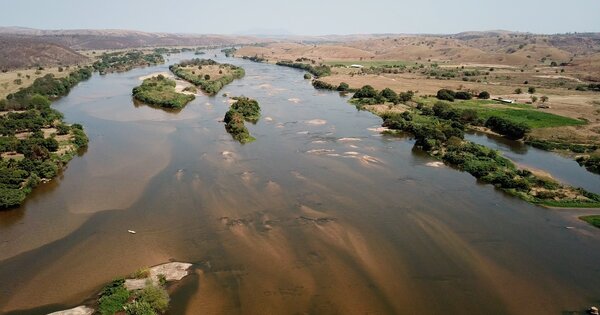A decade after Brazil’s deadliest environmental disaster, mining giant BHP has agreed to pay $110 million to settle a class action lawsuit brought by investors who claimed the company misled them about safety standards at the Fundão dam before its catastrophic failure.
The settlement, announced Monday, marks a significant step toward resolving the complex legal aftermath of the 2015 disaster that killed 19 people and devastated communities when a torrent of toxic mine waste flooded throug
...
A decade after Brazil’s deadliest environmental disaster, mining giant BHP has agreed to pay $110 million to settle a class action lawsuit brought by investors who claimed the company misled them about safety standards at the Fundão dam before its catastrophic failure.
The settlement, announced Monday, marks a significant step toward resolving the complex legal aftermath of the 2015 disaster that killed 19 people and devastated communities when a torrent of toxic mine waste flooded through the Doce River valley in southeastern Brazil.
While BHP has not admitted liability under the terms of the agreement, the settlement represents one of several major financial commitments the Anglo-Australian miner has made to address consequences of the collapse. The agreement still requires approval from the Federal Court of Australia before it becomes final.
“The proposed settlement is a significant milestone in resolving the lingering legal challenges from this tragedy,” said a spokesperson for the law firm representing investor claimants. “After years of litigation, this provides some measure of accountability while allowing all parties to move forward.”
The Fundão dam collapse on November 5, 2015, released approximately 45 million cubic meters of iron ore waste from the Samarco mine, a joint venture between BHP and Brazilian mining company Vale. The resulting mudflow destroyed the village of Bento Rodrigues and contaminated over 400 miles of waterways, eventually reaching the Atlantic Ocean in what experts describe as Brazil’s worst environmental catastrophe.
The investor lawsuit centered on allegations that BHP failed to disclose material information about dam safety risks in its public statements and securities filings prior to the collapse. Shareholders claimed they suffered financial losses when BHP’s market value plunged following the disaster.
Industry analysts note this settlement represents just one component of BHP’s ongoing financial obligations related to the disaster. The company has already committed billions toward remediation efforts, compensation funds, and other settlements. In 2018, BHP and Vale reached a $5.3 billion agreement with Brazilian authorities to fund restoration projects and compensate affected communities.
“This latest settlement primarily addresses shareholder concerns, but the broader impact of Fundão continues to shape mining industry practices globally,” said Maria Cortez, a mining sector analyst with Santiago Resource Consultants. “The disaster fundamentally changed how tailings dams are viewed, designed and regulated.”
The catastrophe prompted the International Council on Mining and Metals to develop new global standards for tailings facilities, requiring more stringent safety measures and transparency. Major mining companies now face heightened scrutiny from investors regarding environmental safeguards and disaster preparedness.
For affected communities along the Doce River basin, recovery efforts continue a decade later. While significant remediation work has been completed through the Renova Foundation, established by BHP and Vale to manage restoration projects, local advocacy groups argue that ecological damage and social disruption persist.
“Many families still haven’t received adequate compensation, and the river ecosystem remains altered,” said Paulo Mendes of the Doce River Defense Coalition. “No settlement can truly reverse what happened, but accountability remains essential.”
BHP has worked to improve its environmental practices since the disaster, implementing more stringent dam safety protocols across its global operations and supporting industry-wide reforms. The company has also divested certain assets with higher environmental risk profiles as part of a broader strategic shift.
For investors, the settlement removes one significant uncertainty hanging over BHP’s outlook. The company’s shares showed modest gains following the announcement, reflecting market relief at the resolution of this particular legal challenge, though other cases related to the disaster remain pending.
“This settlement helps BHP turn the page on one aspect of the Fundão legacy, but the company will be dealing with the broader implications for years to come,” said Eleanor Chang, resources sector analyst at Global Mining Research. “The disaster permanently altered how mining companies must approach environmental risk management and community relations.”
The Fundão collapse highlighted vulnerabilities in the mining industry’s approach to waste storage and has become a case study in business schools and engineering programs worldwide. Safety experts point to a combination of design flaws, maintenance issues, and inadequate monitoring that contributed to the failure.
As the ten-year anniversary of the disaster approaches later this year, the settlement serves as a reminder of both the immediate human tragedy and the long-term consequences of industrial failures. For Brazil’s mining sector, which represents a crucial component of the national economy, the disaster prompted regulatory reforms and heightened scrutiny that continue to influence operations today.


